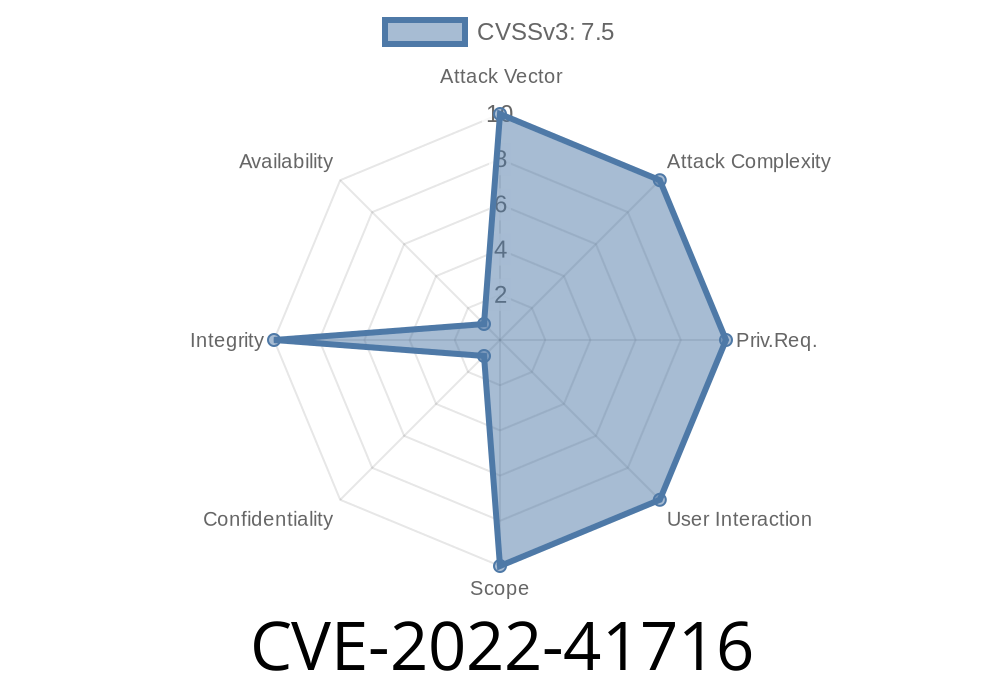In this post, we will discuss the details of a recently discovered vulnerability, CVE-2022-41716, which highlights the risk posed by unsanitized NUL values in Windows environment variables.
Overview
The vulnerability CVE-2022-41716 stems from the usage of unsanitized NUL values, which may enable attackers to manipulate environment variables maliciously in Windows. This vulnerability specifically resides within the syscall.StartProcess and os/exec.Cmd functions, where environment variable values containing NUL values are not correctly checked for validity.
A malicious environment variable value can exploit this undesired behavior to assign a value to a separate environment variable. For example, a string "A=B\x00C=D" would set the variables "A=B" and "C=D" in the environment. It is crucial to understand the implications of this vulnerability and take appropriate action to mitigate the risks it poses.
Exploit Details
To illustrate the exploitable behavior of this vulnerability, let's take a look at a sample code snippet:
package main
import (
"fmt"
"os"
"os/exec"
"syscall"
)
func main() {
cmd := exec.Command("printenv")
// Malicious environment string
unsanitizedString := "A=B\x00C=D"
env := os.Environ()
env = append(env, unsanitizedString)
cmd.Env = env
output, err := cmd.Output()
if err != nil {
fmt.Println("Error:", err)
return
}
fmt.Println("Environment Variables:", string(output))
}
In this example, the environment variables are obtained using os.Environ() and then appended with the unsanitized string "A=B\x00C=D" which results in unexpected behavior. Ultimately, when invoking the printenv command, we see the unintended manipulation of the environment variables due to the NUL character presence.
Original References
To understand the depth of this vulnerability, it is essential to review the original findings and references associated with CVE-2022-41716.
1. GoLang GitHub Issue: This issue provides a comprehensive explanation of the vulnerability, along with the risks it poses to those using unsanitized environment variable values on Windows platforms.
2. GoLang Patch: The GoLang team has addressed this issue by providing a patch that filters out invalid environment settings on Windows.
Mitigation
To implement the mitigation for this vulnerability, one must ensure the proper sanitization of environment variables that involve using NUL values. Following the patch issued by the GoLang team, updating the version of GoLang employed is also recommended. Employing updated versions of libraries and maintaining consistency with recommended security standards and practices is paramount to reducing the vulnerability within any software system.
Conclusion
CVE-2022-41716 illustrates the dangers posed by unsanitized environment variables in Windows, particularly when NUL values are not adequately verified. Due to the potential manipulation of said variables, it is crucial to understand how this vulnerability operates and take necessary steps towards mitigating its impact. By ensuring that the environment variables are appropriately sanitized and utilizing updated software and libraries, developers can minimize the risks associated with vulnerabilities like CVE-2022-41716.
Timeline
Published on: 11/02/2022 16:15:00 UTC
Last modified on: 11/04/2022 13:16:00 UTC
